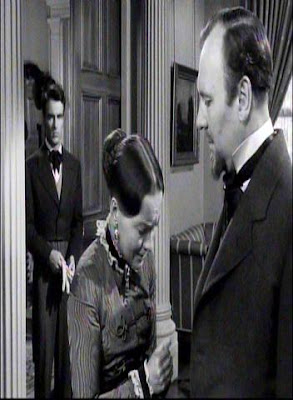For the next couple of posts, beginning on Thursday and concluding next Monday, we’ll be discussing a peculiar predicament of wealthy women in the movies. They are either married for their money, or murdered for the same.
Since most of us don’t have to worry about these extra burdens of extreme inherited wealth, this scenario is one of fantasy, as fanciful as the “madcap heiresses” whose lives were also impossible to identify with, but who we might accept more affably as equals simply because they were so fun and so goofy.
What happened to those other rich girls, the freewheeling spoiled brats who charmed us with their irresponsibility? The wonderful Carole Lombard in “My Man Godfrey” (1936) or Claudette Colbert in “It Happened One Night” (1934), those two madcap heiresses with moxie whose silliness got us through the hard knock life of the Great Depression, they are gone.
They grew up, and grew serious, or perhaps we shrugged them off when we finally learned the value of money ourselves, now that we had a little, in the post-War years. The films we’ll use to examine the plight of the rich girl who is pursued for her fortune are “The Heiress” (1949) and “Invitation” (1952), and both give us an interesting twist on the empowerment of women, both economically and emotionally, who are otherwise vulnerable in mirror reflections of society one hundred years apart.
Then we’ll examine the rich wives whom their husbands intend to murder with the films “Dial M for Murder” (1954) and its remake “A Perfect Murder” (1998). Though usually for purposes of this blog, anything that happened after 1960 didn’t happen, a brief foray into the 1990s will make an interesting contrast to show what has changed in film audiences' expectations for rich girls in the decades between then and now.
Some things, clearly, have not changed much for the rich girl. In the post-war tradition of the movies, she’s still a meal ticket, dead or alive.
